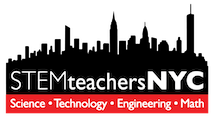Workshop Led by: Mark Schober
The photoelectric effect is one of the central phenomena in our understanding of light and matter. Shine light on a metal, and electrons are ejected . . . sometimes. Why electrons are or aren’t ejected is surprising and unexpected: it took Einstein’s genius to explain it and his ideas reshaped our conception of both light and matter. In the workshop we’ll approach the photoelectric effect in student mode with activities to help your chemistry and physics students reshape their ideas of light and matter. We’ll begin by establishing expectations about how the device should work according to a wave model of light. Then we’ll collect data using an innovative, low-cost apparatus and consider how to use both the device and simulations to build student intuition and understanding. In teacher mode, we’ll also consider the differences in how to approach the lab depending on whether you’re teaching chemistry or physics.
$100 gets you an assembled photoelectric effect apparatus, (battery included) phototube, and a half dozen high output LED’s of various frequencies. (A big thanks to my engineering students who assembled thirty of them to develop their soldering skills and to serve the science teaching community.) Two digital multimeters for measuring the photoelectric current (in the microamp range) and stopping voltage are available for an additional $12. And, at $100, which is the cost of the parts, it’s one-fifth the cost of the cheapest commercially available photoelectric effect apparatus!
Don’t miss this chance to bring the quantum into your chem and physics classroom!

